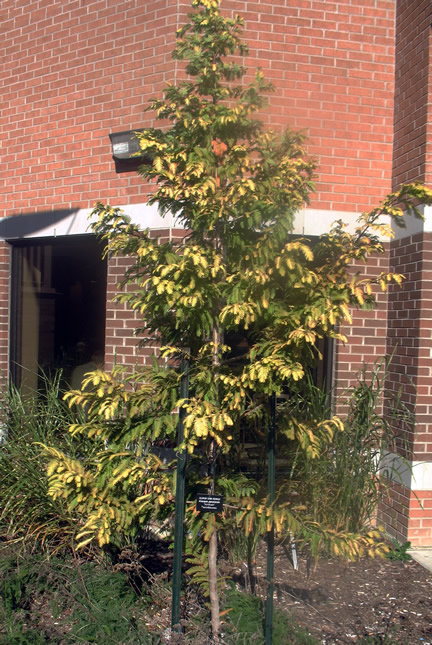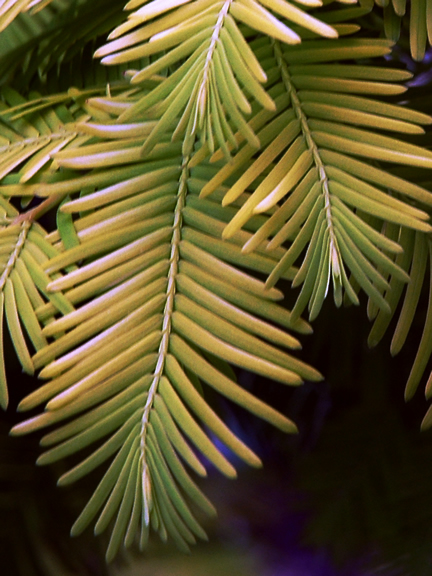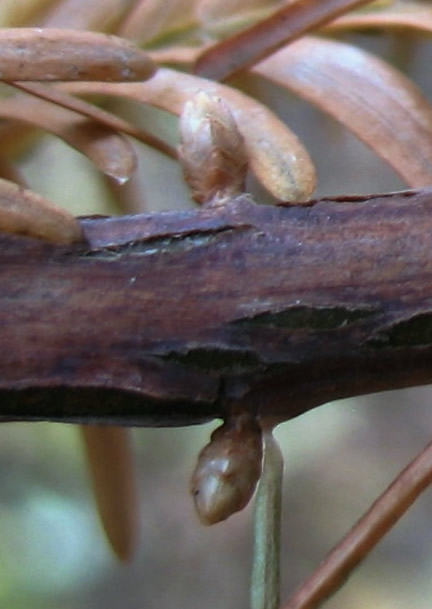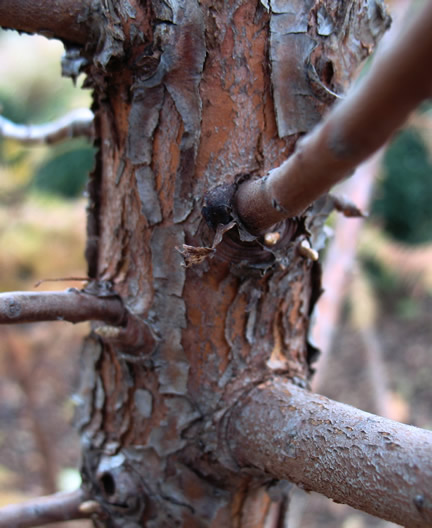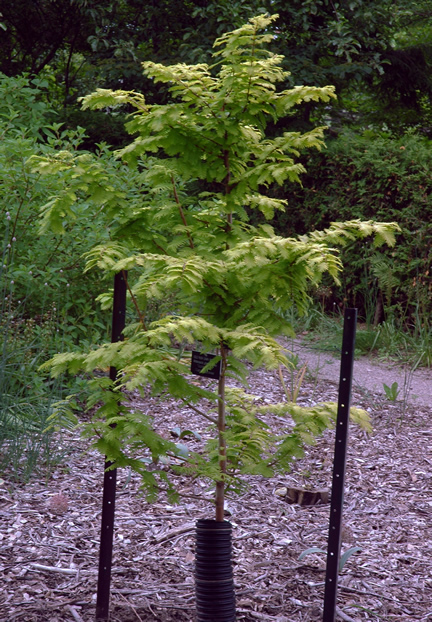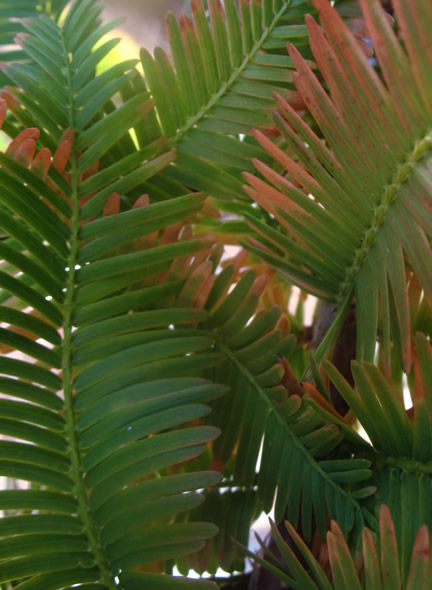
Woody > Metasequoia > Metasequoia glyptostroboides > Metasequoia glyptostroboides 'Ogon '
Metasequoia glyptostroboides
'Ogon '
Goldrush Dawn Redwood
Origin: Found as a seedling in Japan around 1940's, still grows in Japan to this day
Mike's
Opinion


"
This species was thought to be extinct for millions of years. Such a wonderful specimen to see in the full sun. Sun radiates through foliage and appears to glow with gold colours. Excellent display of bark in winter, reddish browns and formed ridging at base of trunk make it visually appealing in dormant months. This huge tree is said to reach heights of 30 m if given proper attention. Needs little attention to pruning, growing in a uniform shape.
Michael Pascoe, NDP., ODH., CLT., MSc. (Plant Conservation)
"
| Family |
| Cupressaceae (Taxodiaceae) |
| Genus |
| Metasequoia |
| Species |
| glyptostroboides |
| Cultivar |
| 'Ogon ' |
| Category |
| Woody |
| Type |
| Tree (deciduous) |
| Synonyms |
| Metasequoia glyptostroboides 'Goldrush' |
| Pronunciation |
| USDA Hardiness Zone |
| 4-9 |
| Canadian Hardiness Zone |
| 5 |
| RHS Hardiness Zone |
| H7 |
| Temperature (°C) |
| -34 |
| Temperature (°F) |
| -30 |
| Height |
| 19 m in 20 years |
| Spread |
| 7 m |
Photographs
Description and Growing Information
Flowering Period
| General Description |
| Fast growing, narrow, upright-pyramidal form. Foilage forms in early April, a light green turning a yellow in spring/summer. Tree can grow to 34 m and bears small cones. |
| Landscape |
| Attractive colours and ornamental winter bark and stems. Ideal for adding shade or a wind barrier in large landscape areas. Center of attraction or outlining laneways, parks, golf coarses, river or lakesides, this is a spectacular species. |
| Cultivation |
| Full sun but shield from the harsh winds. Enjoys moist, well drained soils that are slightly acidic. Does not fair well in harsh, dry conditions. |
| Shape |
| Narrow, upright, pyramidal shape. with a central leader. |
| Growth |
| Fast |
| ID Characteristic |
| A deciduous conifer that develops a strong central leader with 2 types of branchlets, persistent and deciduous. The persistent branchlets have small buds on the stem that carry the deciduous branchlets that are the golden needles. |
| Pests |
| Relatively pest-free. |
| Habitat |
| Horticultural origin. |
| Bark/Stem Description |
| Reddish brown bark on younger trees turning to a chocolate brown when mature. The trunk broadens at the base and develops attractive ridging as age sets in, the bark comes off in strips (exfoliating) with advanced maturity. |
| Flower/Leaf Bud Description |
| Opposite, solitary bud arrangement formed on deciduous branchlets, buds are 7 mm long and have yellowish brown bud scales. |
| Leaf Description |
| Greenish yellow needles emerge in early April, feather like, soft, flattened and arranged opposite, pectinately. 1.25 cm long and 2 mm wide on older trees, they are narrow grooved and mid-veined. |
| Flower Description |
| Small flowers bloom among the foliage in early spring. The female blossom turn into a small round cone that is light blue then brown in colour. Tree starts flowering at about 20 years of age or at about 19 m in height. |
| Fruit Description |
| 2-3.5 cm long and about 2 cm wide, ovulate cones attached on long, bare stems. The tree is monoecious, producing light brown female cones and hanging round male cones. Mature cones have 3-16 woody/leathery cone scales. |
| Colour Description |
| Green-yellow needles in early spring turning to golden yellow in summer while the autumn the foliage turns brown-orange. |
| Texture Description |
| Fine in spring/summer, less fine in winter. |
| Notable Specimens |
| The Gardens of Fanshawe College, London Ontario, Canada. The A.M. Cuddy Gardens, Strathroy, Ontario, Canada. |
| Propagation |
| Cuttings work well, take 20 cm long wood in February from parent stock.Cuttings will root well without the aid of hormones. Outdoor rooting can be done quite well. |
